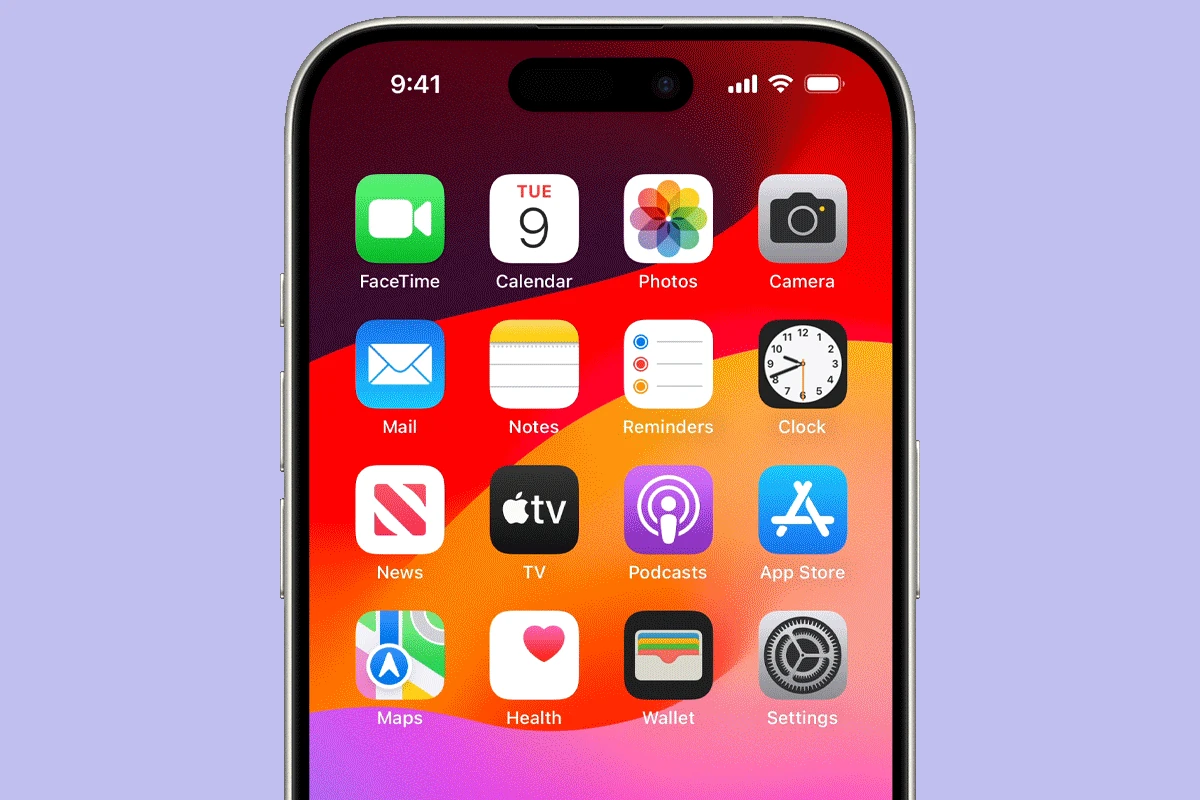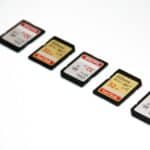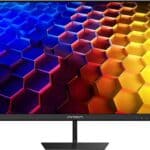President Trump’s latest tariff plan has carved out key exemptions for tech products, sparing consumers from potential price hikes on everyday electronics. The new tariffs targeting China will not affect smartphones, computers, memory chips, and other critical technology components like semiconductors and flat-panel displays. This decision represents a significant shift from earlier statements that suggested more comprehensive tariffs on Chinese goods.
The exemptions appear to benefit major tech companies like Apple, whose product line is now largely protected from the enhanced tariffs. While Trump has described his approach as “reciprocal,” these carve-outs demonstrate a more nuanced strategy than initially indicated. The decision likely reflects concerns about consumer backlash that might result from price increases on popular consumer electronics.
Industry observers note that these exemptions could help maintain stability in the tech sector while still allowing the administration to apply pressure on China in other areas. The move suggests the administration is attempting to balance its trade objectives with potential impacts on American consumers and businesses that rely heavily on these technologies.

Strategic Exclusions in a Broader Trade Landscape
The Trump administration’s latest tariff rollout includes a notable carve-out that’s raising eyebrows across the tech and trade worlds: iPhones, personal computers, semiconductors, and other core electronics have been excluded from the new set of reciprocal tariffs. While the broader plan still targets a wide swath of imported goods—especially from China—this exemption sends a clear message. The U.S. is drawing the line where trade policy risks doing more harm than good to consumers, the economy, and national security.
Why Were These Exemptions Made?
At first glance, this move might seem contradictory to the administration’s tough-on-China narrative. But these exclusions were likely made for strategic and economic reasons:
- Consumer impact: Placing tariffs on iPhones and laptops would have driven up prices on everyday essentials for millions of Americans. With inflation already a concern, the administration likely aimed to avoid political backlash from price hikes on products that many households depend on.
- Tech sector interdependence: The tech manufacturing ecosystem is global. iPhones, for instance, are assembled in China, but use components from Japan, South Korea, Germany, and the U.S. Applying tariffs would have punished a network of U.S.-aligned nations and companies.
- Semiconductors are irreplaceable: Chips power everything—from smartphones to satellites—and are a linchpin of both economic vitality and national defense. Imposing tariffs on semiconductors, which already face supply chain bottlenecks, would risk harming domestic tech firms like Apple, AMD, NVIDIA, and Intel, all of whom rely heavily on foreign fabs for production.
A Temporary Reprieve—Not a Surrender
Despite the exemptions, the overall tone of the administration’s trade posture remains combative. The 145% tariffs on Chinese steel, electric vehicles, and solar panels are moving forward. The tariff strategy is less about blanket punishment and more about selective pressure—targeting sectors where U.S. manufacturing can realistically compete, while sparing industries where global interdependence is unavoidable.
Behind the Semiconductor Strategy
Perhaps the most consequential exemption is semiconductors. Not only are chips essential for everything from AI to aerospace, but the U.S. has fallen far behind in chip fabrication. Taiwan’s TSMC and South Korea’s Samsung produce over 70% of the world’s most advanced chips. While the CHIPS Act has kickstarted domestic investment in new fabs across states like Arizona, Ohio, and Texas, production timelines stretch into the late 2020s.
Avoiding tariffs on chips is also a way to buy time—giving U.S. companies room to build domestic capacity without facing a short-term chip crisis. In parallel, the administration is reportedly considering national security investigations into semiconductor imports, which may lay the groundwork for future trade action if domestic capacity ramps up.
Who Benefits the Most?

The impact of this exemption will be felt across the tech supply chain:
- Hardware giants: Apple, Dell, HP, and Microsoft avoid potential cost surges and supply chain disruptions.
- Chipmakers: Intel, AMD, NVIDIA, and Qualcomm benefit from tariff-free access to essential components and partner fabs.
- Retailers: Best Buy, Walmart, and Amazon can continue offering competitive pricing on electronics without absorbing or passing on added import costs.
- Component suppliers: Western Digital, Micron, and Broadcom avoid downstream effects that tariffs might have created in pricing or availability.
- Consumers: Perhaps the biggest winners—prices on phones, laptops, and tablets remain stable for now, avoiding inflationary pressure during a politically sensitive time.
The Big Picture
This latest move reflects a shift toward a more surgical trade approach. The Trump administration is dialing in on industries where tariffs might actually encourage domestic production—like EVs or batteries—while steering clear of punitive measures that could backfire on U.S. consumers or strategic sectors. At its core, this decision reveals the reality of modern trade: even the most protectionist policies must make room for global economic interdependence.
As supply chains evolve and new investments take root in the U.S., future tariff policies will likely be reassessed. But for now, American tech giants have received a crucial lifeline—and the consumer tech market can breathe a sigh of relief.
Key Takeaways
- Trump’s new tariff plan exempts smartphones, computers, and semiconductors from additional taxes on Chinese imports.
- Major tech companies like Apple will benefit as almost their entire product lines avoid the enhanced tariffs.
- The targeted exemptions aim to protect American consumers from price increases on essential electronics while maintaining pressure on China.
Overview of Trump’s Tariff Policy
President Donald Trump’s tariff policy shows a strategic approach to trade with China, featuring targeted exemptions for technology products while maintaining a strong stance on other Chinese imports.
Impact on Tech Industry
The tech industry has received significant protection from Trump’s latest tariff plan. Major companies like Apple stand to benefit as their product lines are largely exempt from the new tariffs. Without these exemptions, consumers might have faced dramatic price increases on everyday electronics.
Many analysts had warned that tariffs on tech products could lead to substantially higher prices. Some reports suggested iPhones might have cost up to $3,500 if fully subjected to the tariffs. This exemption represents a major shift from earlier tariff strategies.
The decision reflects the importance of the tech sector to the U.S. economy and consumers’ reliance on these products. It also acknowledges the complex global supply chains that make complete separation from Chinese manufacturing difficult.
Exemptions Explained
The Trump administration has carved out specific exemptions for key technology products. Mobile phones, laptop computers, and memory chips top the list of items spared from the “reciprocal” tariffs on Chinese goods.
These exemptions also extend to other essential hardware components including:
- Semiconductors
- Solar cells
- Flat-panel displays
- Monitors
- Flash memory
This targeted approach differs from earlier tariff implementations that took a broader sweep. The current exemptions protect almost the entire product lines of major tech companies while maintaining pressure on other sectors of Chinese manufacturing.
The decision to exclude these items suggests a recognition of both consumer dependence on technology and the potential political consequences of dramatically higher prices on everyday electronics.
Beyond Smartphones and Computers
While smartphones and computers grabbed headlines, the exemptions cover a wider range of technology products. The inclusion of semiconductors is particularly significant given their role as critical components in virtually all modern electronics.
Solar cells and flat-panel displays represent important exceptions that benefit both consumers and the renewable energy sector. These exemptions acknowledge the strategic importance of certain technologies beyond just consumer electronics.
Despite these carve-outs, Trump’s tariff policy continues to target numerous other Chinese imports. The administration describes these as “reciprocal” tariffs, suggesting they’re designed to balance what they view as unfair trade practices by China.
American consumers will likely still see price increases on many products not covered by the exemptions. Experts advise against panic-buying electronics, especially if it would put consumers in debt.
Global Implications and Industry Response
The exemption of electronics from Trump’s tariffs has sent ripples through global markets, affecting manufacturing strategies, consumer pricing, and international trade relations.
International Manufacturing Shifts
Many electronics companies had already begun shifting production away from China due to earlier trade tensions. Apple started moving some manufacturing to India and Vietnam, aiming to reduce dependency on Chinese factories. This trend will likely continue but at a steadier pace now that immediate tariff pressure on electronics has eased.
Companies like Samsung have increased investments in Vietnam, where they now produce over 60% of their smartphones. India has also emerged as a key manufacturing hub, with its “Make in India” initiative attracting major tech firms.
These shifts create jobs in new regions but also cause economic strain in Chinese manufacturing cities. Local governments in China have offered incentives to keep factories operating, including tax breaks and subsidized facilities.
Consumer Electronics Market Dynamics
With smartphones and computers exempted from the new tariffs, consumers won’t face immediate price hikes on popular devices. Market analysts at Counterpoint Research had previously warned that tariffs could have pushed iPhone prices up by 30% or more.
The exemption helps maintain stable pricing in the competitive smartphone market. Budget-conscious consumers, particularly important for Android manufacturers, won’t need to delay purchases due to tariff-related price increases.
Stock markets responded positively to the news, with Apple shares gaining value after the announcement. The semiconductor industry also saw relief, as chip manufacturers can maintain existing supply chains without disruption.
Online retailers like Amazon and electronics stores can continue current pricing strategies without major adjustments.
Potential Retaliatory Measures
Despite the electronics exemptions, international trade partners may still implement counter-measures against U.S. goods. The EU has prepared a list of American products that could face retaliatory tariffs if trade tensions escalate.
China might target U.S. agricultural exports or restrict rare earth mineral shipments, which are crucial for electronics manufacturing. Chinese officials have been careful in their public statements but indicated they would “take all necessary measures” to protect trade interests.
Trade experts warn that continued escalation could eventually impact exempted sectors through supply chain disruptions. Even with direct tariff exemptions, companies like Apple face risks if component suppliers get caught in broader trade restrictions.
Yahoo Finance reports suggest markets remain cautious about long-term trade stability despite the short-term relief for electronics.
Frequently Asked Questions
Trump’s recent tariff plan has created significant changes in the tech industry landscape. Many consumers and businesses are wondering how these changes will affect prices and availability of popular electronics.
How does the new tariff plan impact the consumer electronics industry?
The consumer electronics industry is seeing mixed effects from Trump’s latest tariff plan. Most notably, smartphones, computers, and semiconductors have been exempted from the new tariffs.
This exemption means that prices for these specific products should remain stable. Companies like Apple can continue to manufacture iPhones in China without facing additional import costs when bringing them to the US market.
Other consumer electronics not covered by the exemption may see price increases as manufacturers pass on tariff costs to consumers.
What influenced the decision to exclude certain products like iPhones, computers, and semiconductors from the tariffs?
Economic concerns played a major role in the decision to exempt these products. The administration recognized that adding tariffs to widely used consumer technology would directly impact American consumers through higher prices.
Political considerations also factored in, as dramatic price increases on popular products like iPhones could create consumer backlash. As one search result noted, “Trump blinked on ‘reciprocal tariffs'” regarding these items.
Supply chain realities influenced the decision too. Many tech companies rely heavily on Chinese manufacturing, and restructuring these complex networks would take years.
Which products are affected by the latest tariff adjustments announced by the administration?
While smartphones and computers received exemptions, many other Chinese imports face the new 34% “reciprocal tariff” mentioned in the search results.
These affected products include various consumer goods, industrial components, and manufacturing materials from China not specifically excluded in the exemption list.
Tech accessories like certain cables, cases, and non-essential peripherals may still face tariffs if they don’t fall under the exempted categories.
What are the potential economic effects of the new tariff plan on US and foreign tech companies?
US tech companies with exempted products will maintain their current cost structures and competitive positions. This benefits major players like Apple, Microsoft, and Nvidia.
Companies that produce non-exempt electronics may need to consider relocating manufacturing operations. The search results mention that “Trump’s tariffs on Chinese imports are wreaking havoc on global supply chains for tech hardware giants.”
Foreign tech companies face similar challenges based on which products they manufacture and where their production facilities are located.
How might the exclusion of these items from tariffs impact trade relations with China?
The selective exemption approach creates a mixed signal in US-China trade relations. By targeting some industries while sparing others, the administration maintains pressure while avoiding disruption to tech supply chains.
China may view these exemptions as an opportunity to strengthen its position in key technology manufacturing sectors. The country remains essential to global tech production despite ongoing trade tensions.
Trade negotiations may focus more on industries affected by tariffs rather than the exempted tech categories.
Will there be future considerations for including electronics like iPhones, computers, and semiconductors in the tariff plan?
Future inclusion of currently exempted electronics in tariff plans remains possible. The administration could revisit these exemptions if trade negotiations with China deteriorate.
Economic conditions and consumer sentiment will likely influence any decision to expand tariffs to these products. Sharp price increases on everyday technology could face significant public pushback.
Tech companies are likely preparing contingency plans should the tariff situation change, including potential manufacturing relocations or supply chain restructuring.







